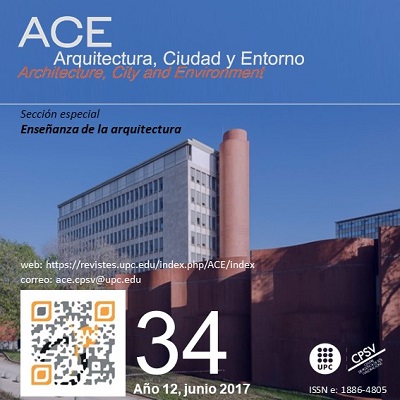CO effects in the nearest crosses border population between Mexico and the United States. Case study: Baja California - California
DOI:
https://doi.org/10.5821/ace.12.34.4723Keywords:
Carbon monoxide, border cities, BC-CA, ports of entryAbstract
This research estimates the amount of emissions of carbon monoxide (CO) caused by waiting times at border ports of access (PAF) of Baja California-California, and the possible implications on the population living in neighboring urban areas.
To carry out this investigation the period 2000 is analyzed to 2010 and the definition of population polygons associated with rails vehicular storage of border ports arises, the typological association vehicular their respective CO to subsequently estimate emissions CO with respect to the area of population polygons and finally establish the effects of CO in the population by PAF polygons.
It was observed that the total amount of individual and collective traffic flows have declined by about six million, in addition to residents of the areas surrounding the various PAF analyzed are changing residence to other parts of the interior of the town. On the other hand, in San Ysidro and PAF concentrations Center Mexicali emissions exceed the permitted parameters.
The originality and relevance of this research is that every day at the height of the ports of border access between Mexico and the United States, traffic congestion that result in greenhouse gas emissions which primarily affect the immediate population are created to these ports, so an analysis methodology is proposed to reach results on the effects these emissions cause to the surrounding villagers to the border between the two countries.
Downloads
Published
Issue
Section
License
| INTELECTUAL PROTECTION CRITERIA |
At this moment, it is count with the "Oficina Española de Patentes y Marcas", while global protection it is being processed by the World Intelectual Property Organization (OMPI/WIPO). Nevertheless the International Standard Serial Number Office (ISSN) has given the following numbers ISSN: 1886-4805 (electronic version) and 1887-7052 (paper version). All articles will be peer reviewed, using double blind reviewing. |
| COPYRIGHT |
The article contents and their comments are authors exclusive liability, and do not reflect necessarily the journal editor commitee's opinion. All ACE published works are subject to the following licence CC BY-NC-ND 3.0 ES http://creativecommons.org/licenses/by-nc-nd/3.0/es/ It implies that authors do not hold nor retain the copyright without restrictions but only those included in the licence. |





































